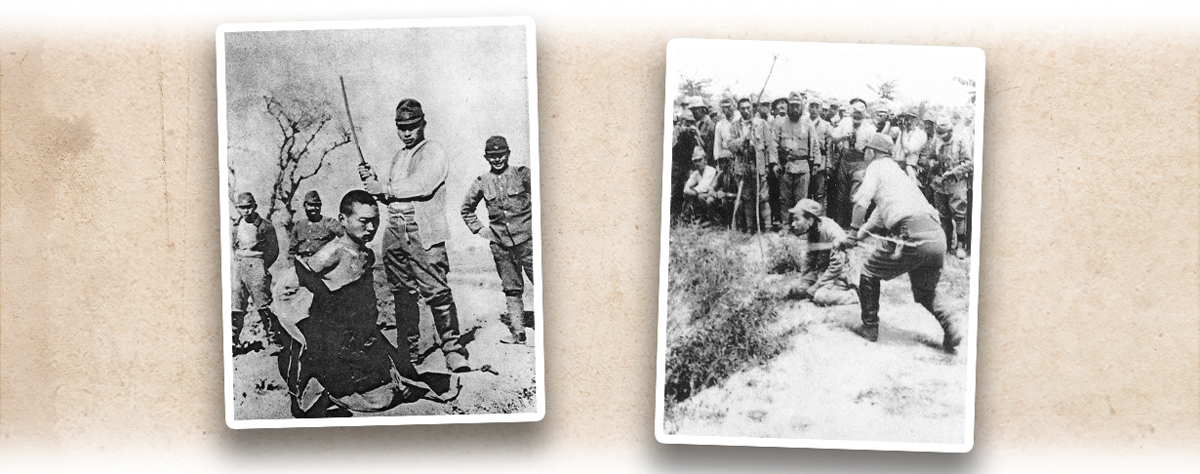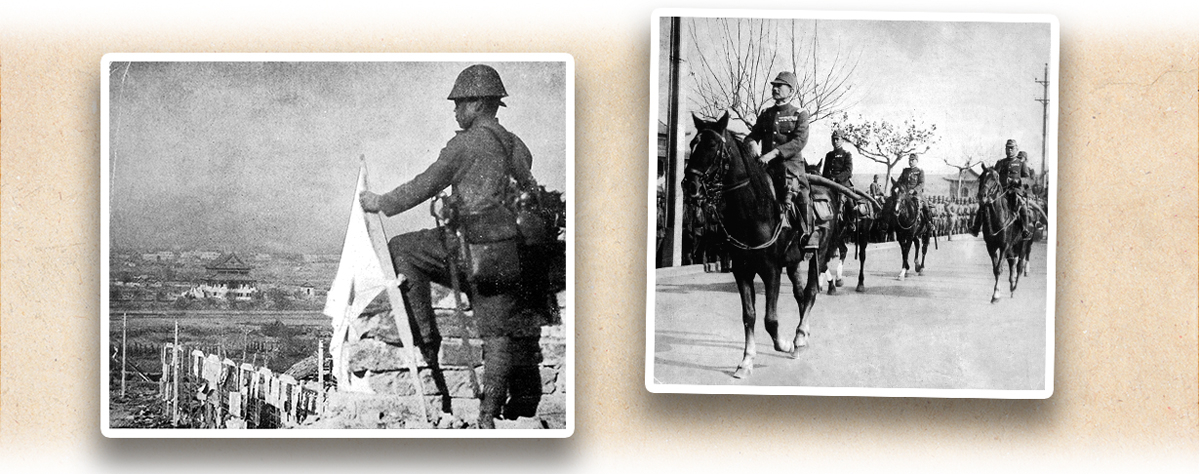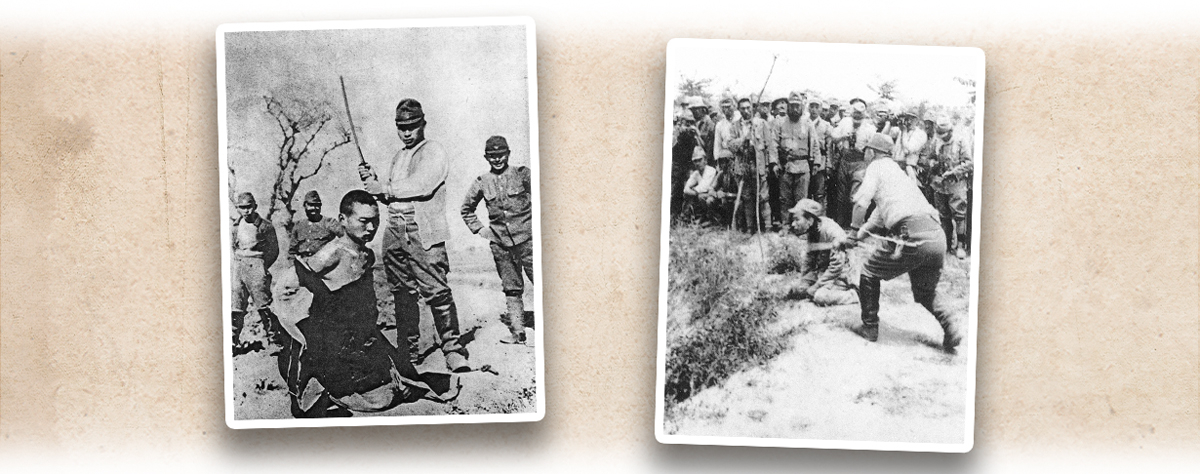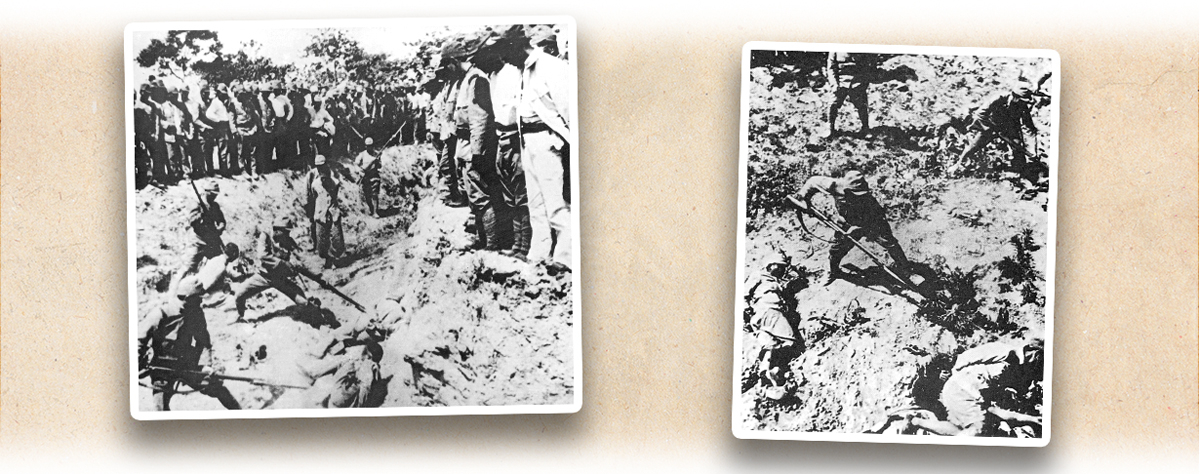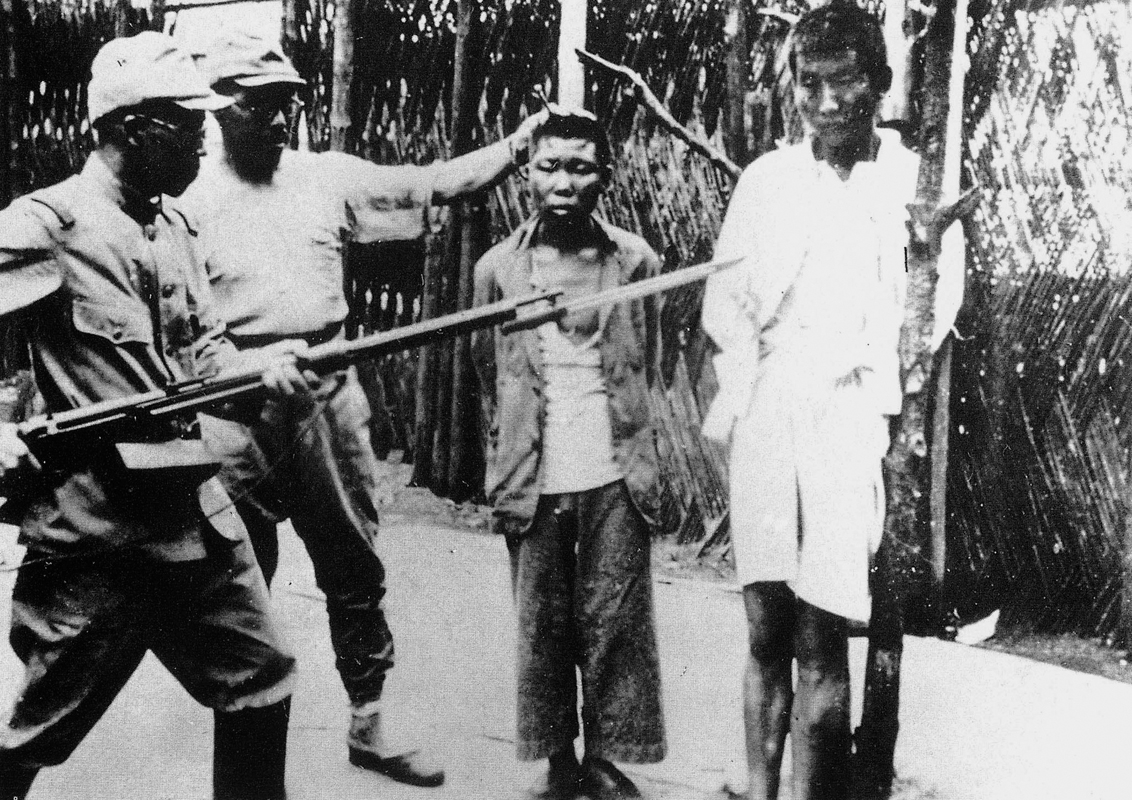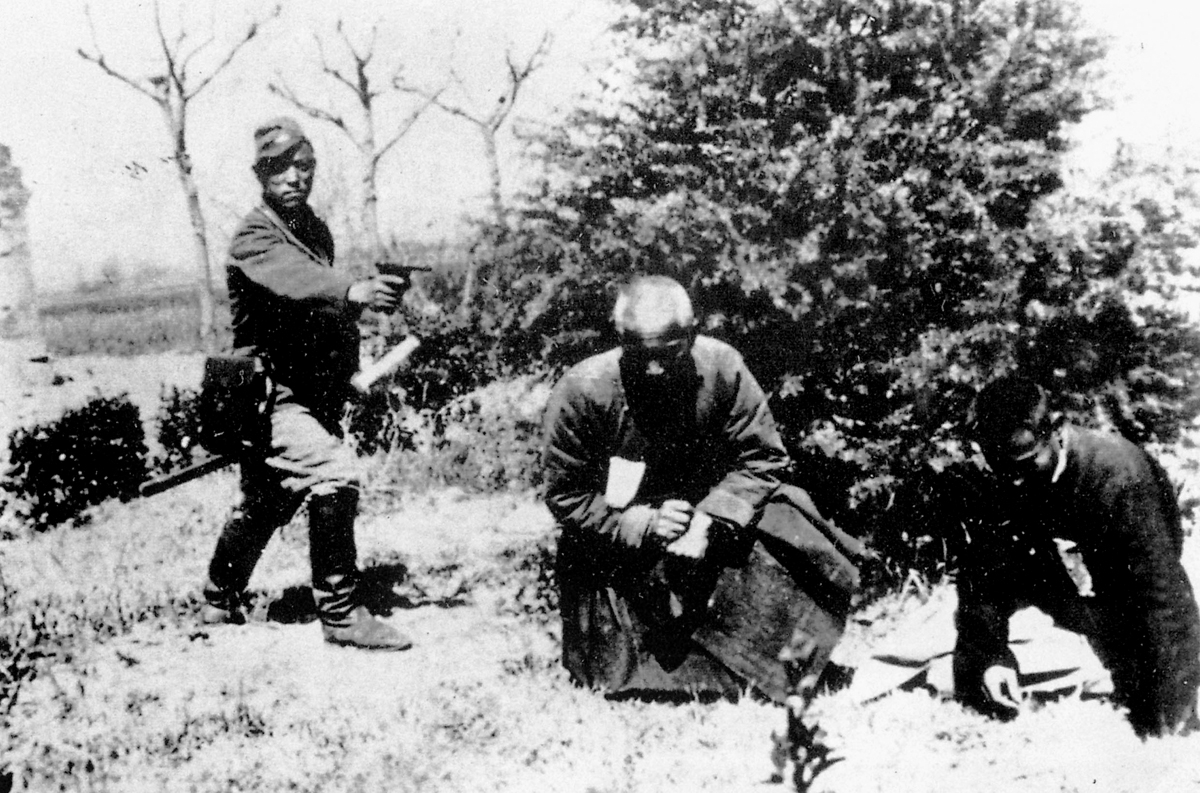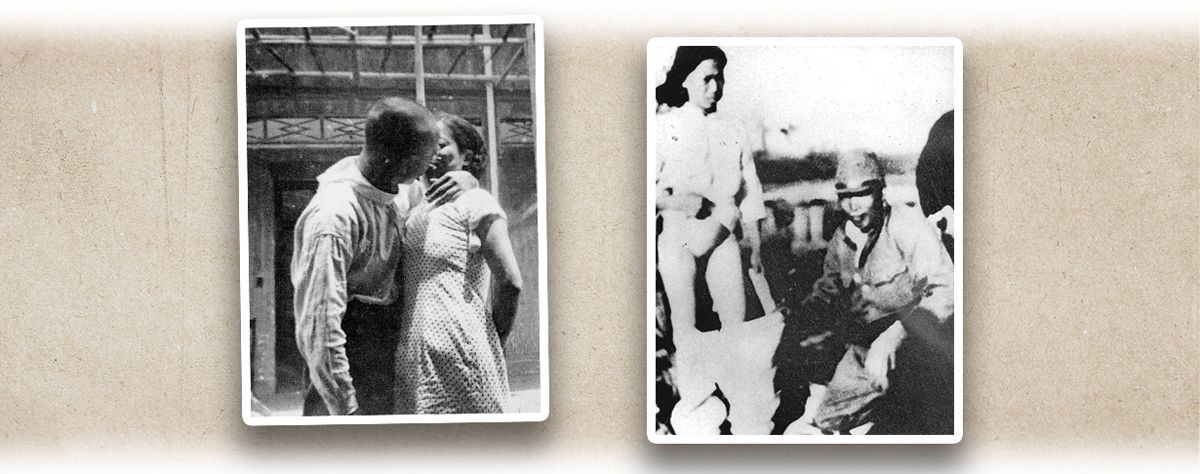On 12 November 1937, the National Revolutionary Army (NRA) withdrew from Shanghai (上海). The Nationalist Government then declared to move its capital, government offices, schools, and factories to the inland city of Chongqing (重慶), which would serve as its temporary capital. Only 460,000-550,000 of the million population of Nanjing (南京) remained in early December since June of the same year. At that time, Chiang Kai-shek (蔣介石) appointed Tang Shengzhi (唐生智) as the Commander of the Nanjing Garrison, and ordered him to hold the city for a short time or withdraw it at an appropriate time.
Since 15 August until the beginning of December 1937, the Japanese Army had been indiscriminately bombarding the capital city of Nanjing. After capturing Shanghai, the Japanese forces launched a full-scale attack on Nanjing. On 8 December, the Japanese forces occupied the peripheral territory of Nanjing, and on 10 December, they unleashed a frenzied attack on the fortifications along the city wall. On 12 December, the headquarters of the Nanjing Garrison commanded to abandon the city and break through the siege for retreat. The next day on 13 December 1937, the Japanese forces advanced on Nanjing. Form that day to February 1938, they launched a massacre on the defenseless populace of Nanjing for three months. After the war, the International Military Tribunal for the Far East (IMTFE) concluded the massacre lasted for seven weeks, with the first three weeks to be especially catastrophic. It was estimated that over 200,000 and even 300,000 people were killed.
|
|
There are different points of view on whether the Nanjing Massacre occurred and its number of deaths. What is a fair assessment to this historical event? |
|
|
See answer below. |
On 13 December 1937, the Japanese forces captured Nanjing. Left: a Japanese soldier standing on an elevated position and holding a Japanese national flag after capturing Nanjing. Right: on the afternoon of 17 December 1937, the Japanese forces conducting a ceremony for entering the city. At the front was Matsui Iwane, the Commander of the Japanese Central China Area Army. After the fall of Nanjing, an outrageous massacre was about to stage.
Beheadings during the Nanjing Massacre.
Mass bayoneting during the Nanjing Massacre.
Bayoneting live targets during the Nanjing Massacre.
Shootings during the Nanjing Massacre.
Burnings and mass live burials during the Nanjing Massacre.
Killing competitions during the Nanjing Massacre.
Left: in its December 1937 issue, the newspaper Tokyo Nichi Nichi Shimbun published a photo titled “Incredible Record: in the Contest to Cut Down 100 People)” of two Japanese officers holding military sabres. The caption on the left of the photo reads “Two officers compete to kill 100 people”, reporting the killing competition held by these two Japanese officers at the foot of Purple Mountain (紫金山) in Nanjing.
Right: the two Japanese officers in the killing competition: Second Lieutenant Mukai Toshiaki (left) killed 106 people, and Noda Tsuyoshi (right) killed 105.
The Nanjing Massacre: heads of beheaded Chinese people being stacked by the Japanese Army; a child killed by the Japanese.
Sexual violence against women - one of the many serious crimes committed by the Japanese forces in Nanjing.
It was estimated that hundreds of thousands of Chinese civilians were killed in the Nanjing Massacre perpetrated by the Japanese Army. It is one of the most appalling war crimes committed in the modern era.
|
|
There are different points of view on whether the Nanjing Massacre occurred and its number of deaths. What is a fair assessment to this historical event? |
|
|
China has always maintained that Japan killed around 300,000 people in the Nanjing Massacre. Meanwhile in Japan, people held different views on this incident. While some scholars, civilians, and even veterans who participated in the war in China agree with China’s portrayal of the event; some believe fewer people were killed, perhaps no more than 200,000 or even just 100,000. Some Japanese even denied the existence of the massacre. However, it is unquestionable that the massacre indeed happened with the court evidence and the ruling on the Japanese war criminal after the war. The evidence is listed below: 1. The ruling of the IMTFE: Over 200,000 were killed in the massacre. In the first month of the massacre, around 20,000 Chinese women were raped by Japanese soldiers, the majority of whom were killed. One third of Nanjing was set ablaze by the Japanese Army, and the fires lasted for six weeks. After standing trial at the IMTFE, Matsui Iwane, the Commander of the Japanese Central China Area Army, was sentenced to death for being primarily responsible for the Nanjing Massacre. 2. The ruling of the Nanjing War Crimes Tribunal: On 13 December 1937, the Tokyo Nichi Nichi Shimbun covered a contest between two Japanese officers, Mukai Toshiaki and Noda Tsuyoshi. The two men competed to be the first to kill 100 people with a sabre. According to the article, the contest took place on the way to Nanjing, and the one who could kill 100 people first when they captured Nanjing won. By the time they reached the foot of Purple Mountain, the officers claimed to have killed 106 and 105 people respectively but were unsure about who reached 100 first. Unable to determine a winner, they agreed to take it as a tie game and extend the contest to 150 killings. After the end of the war, these two Japanese officers were sentenced to death. The Nanjing Massacre was an inconceivable crime against humanity. When looking into this subject, one should not view it just with an academic approach. We should take into consideration the testimony of the Chinese victims, the remorse of some Japanese veterans (as in The Diary of Azuma Shiro), and eye-witness accounts of foreigners (like Miner Searle Bates, an American professor at Nanking University ﹝金陵大學﹞). At the same time, we should also look into the evidence, judgements, and rulings of the war crime tribunals after the war. |
Sources of most photos used in this feature piece: Fotoe.




